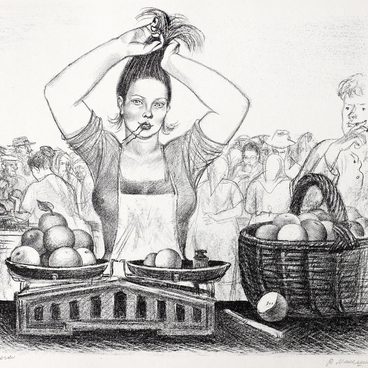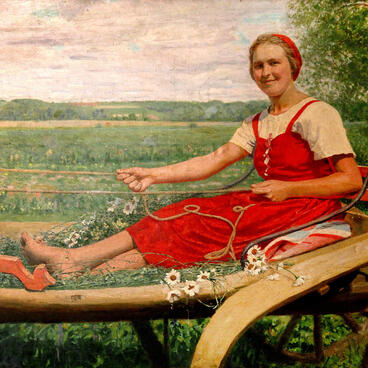The collection of the Irbit State Museum of Fine Arts includes a painting titled “Pipe Benders” by Iosif Mikhailovich Gurvich.
In this 1972 painting, the artist depicted workers using old-fashioned technology. Four workers are bending red hot metal pipes. They are placed in a diagonal arrangement to emphasize the intensity of physical labor. The workers are wearing work gloves and using large pliers to bend the pipe blanks stretched through the workshop.
Iosif Gurvich was known as the “Soviet Cézannist” due to his fascination with the artistic method of the French artist. His admiration for Cézanne and Renoir and acquaintance with the art of Konchalovsky and Mashkov shaped his artistic preferences which formed when he lived in Odessa. As a result, his work contains features of not the Russian school of painting (even that formed by the Westernizers) but the traditions of French Impressionism. These methods can also be seen in the displayed painting, for example, in the use of contrasting warm and cold colors, generalized geometric shapes, and a change of perspective. With great care and attention, the artist strove to capture his own emotions and experiences. Among his artist friends, Iosif Gurvich was known as “Russian Cézanne”. They respected him for working in his own unique style, despite the ubiquitous socialist realism style that gave bread, caviar, and titles to the “court artists” of the Soviet times.


